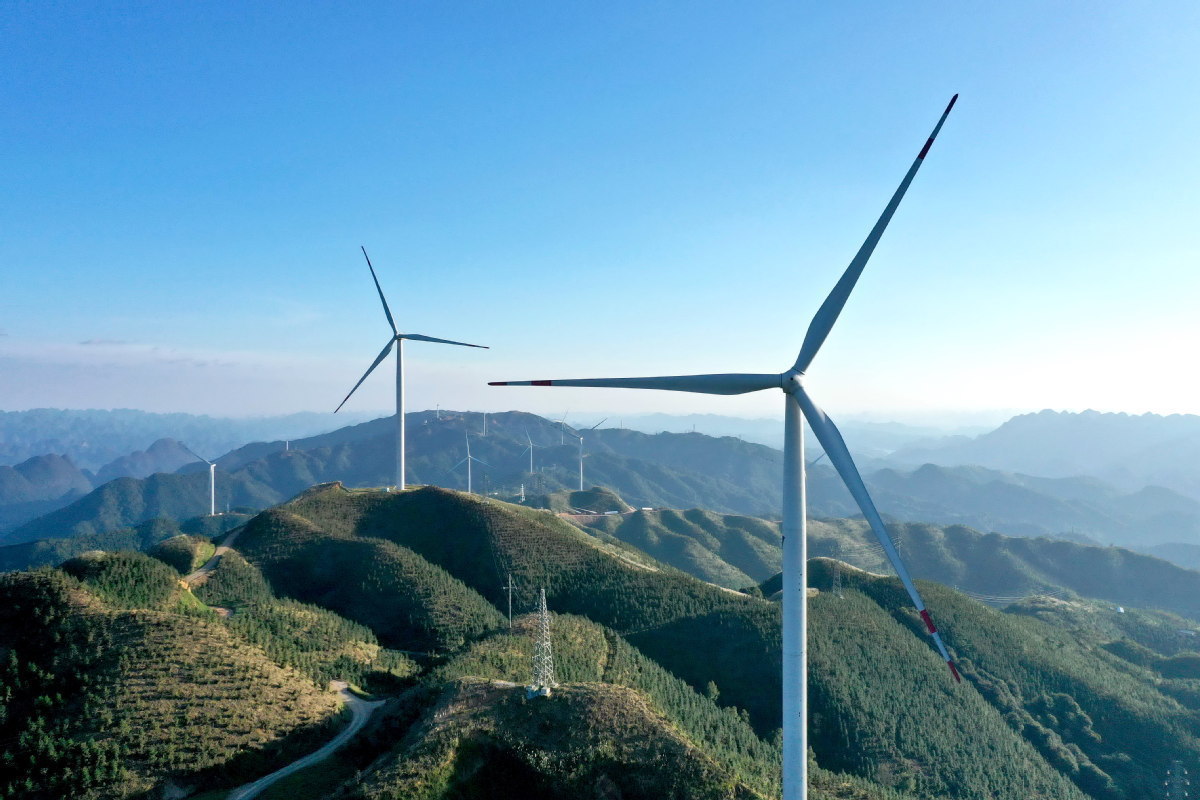source:China Daily Global editor:Zhang Wenni

Aerial photo taken on Aug 19, 2020 shows wind turbines in Jiucaiping scenic spot in Southwest China's Guizhou province. [Photo/Xinhua]
In face of the recent record-setting heat wave that tested California's power grid, experts attributed the state's success to its commitment to renewable energy and called for collaboration with China to accelerate the path to a fully clean electricity grid.
California has set aggressive targets for renewable energy adoption, with state law requiring 90 percent of all retail electricity sales to come from renewable sources by 2035 and 100 percent by 2045. To meet those ambitious goals, the state is turning its attention to offshore wind power.
"In California, we have zero offshore wind today ... right now, China is far ahead of the US on the offshore wind industry," Daniel Kammen, a professor of energy at the University of California, Berkeley, and director of its Renewable and Appropriate Energy Laboratory, said.
California has designated two zones for offshore wind farms — one in Humboldt Bay in the north, and another in central California. "Offshore wind is exciting because it can be permitted more quickly and serves as a 'battery' for the grid," Kammen said.
Offshore wind can complement the production cycles of solar and on-land wind energy. That characteristic is particularly valuable, as solar production quickly diminishes when the sun sets, requiring system operators to replace those megawatts with other sources in real time to maintain grid stability.
It also offers flexibility in energy production, capable of generating electricity during peak demand and producing hydrogen or methanol during periods of low electricity prices. That flexibility presents huge opportunities to decarbonize sectors that have traditionally been difficult to transition to clean energy, Kammen said.
The state can directly apply some of China's practices, he said. "The best way to apply it is not just to read about it, but to actually get partners from China."
California has already taken such steps by inviting engineering groups from Norway. The state is also exploring opportunities in fuel cells, hydrogen production and other offshore renewable energy sources, such as tidal and wave power. Those areas promise rich opportunities for knowledge exchange and collaboration with Chinese partners, who have wide experience in the fields, Kammen added.
California and China have a history of partnership in developing clean energy technologies.
Kammen, however, stressed the need to accelerate the collaborations. He highlighted his own partnerships with research colleagues at Tsinghua University and North China Electric Power University, as well as with Chinese companies such as Geely.
"We want to build more of those teams so that we can move quickly when the politics let it happen," he said.
Gaining momentum
Despite tensions at the national level, locality cooperation between China and the United States has gained momentum recently.
"I think the conference may give you the best example," said Richard Dasher, director of the US-Asia Technology Management Center at Stanford University, referring to the 2024 Global Green Development Summit at his university on the weekend.
The summit, held by the Global Green Development Alliance, brought together climate and energy experts, as well as business leaders from both countries to discuss "energy transition and innovation for carbon neutrality".
Companies must provide solutions that are both economically viable and attractive to consumers, Dasher said.
Kammen emphasized the need for a combination of Silicon Valley's innovative mentality and the large-scale industrial capacity of entities such as China's State Grid and the State Grid Electric Vehicle Service.
He pointed to the productivity of new companies and university offshoots as evidence of the potential for collaborative innovation with Chinese companies.